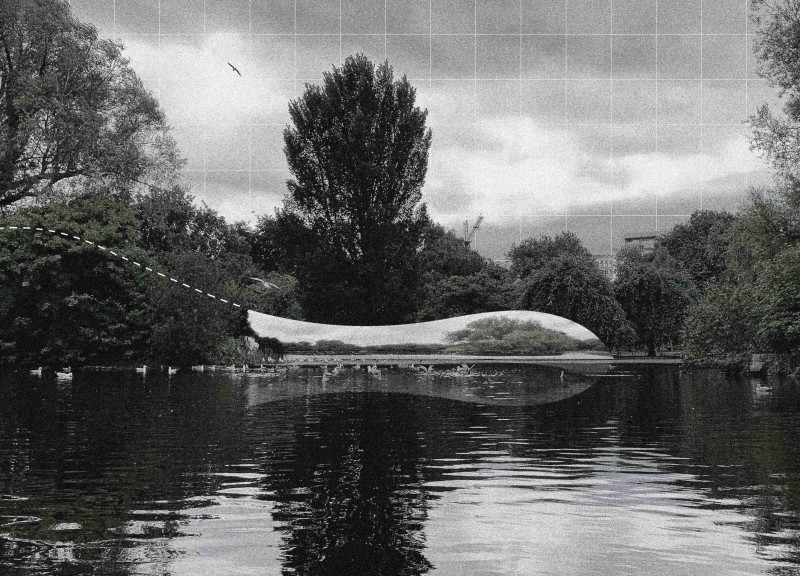5 key facts about this project
This architectural project functions as a multifunctional social hub, offering spaces for gathering, contemplation, and community events. Its design emphasizes a seamless integration with the natural landscape, fostering a sense of connection between humanity and nature. From its very layout, the pavilion is conceived as a flowing, organic form that resonates with the contours of the park, drawing visitors into its embrace.
Key elements of the pavilion include well-defined public gathering zones that feature versatile seating arrangements, allowing groups to congregate easily. The pathways connecting these areas are designed with fluidity in mind, promoting a sense of movement as visitors navigate through the space. This layered organization not only facilitates social interactions but also encourages exploration, as individuals are invited to discover various aspects of the pavilion and its surroundings.
The architectural design incorporates significant transparency and openness, primarily through the use of glass. These large expanses enable ample sunlight to filter inside, creating an airy atmosphere while reinforcing the connection to the outside world. This thoughtful use of materials contributes to the overall sensory experience within the space, as visitors can observe changes in light throughout the day.
Additionally, the roofline of the pavilion is marked by its undulating form, which not only enhances its aesthetic appeal but also serves a functional purpose. The design incorporates natural ventilation strategies, allowing airflow to circulate effectively, ensuring a comfortable environment regardless of external weather conditions. The interplay of light and shadow created by the architecture adds a dynamic quality to the interior, allowing the human experience within the space to evolve throughout the day.
The material palette is carefully selected to align with the project's environmental ethos. Reinforced concrete provides the necessary structural integrity, while wood is utilized for seating and framework elements, adding warmth and a sense of grounding. Steel is strategically employed to enhance the roof structure, further ensuring the durability of this community-focused space. This considered materiality highlights a commitment to sustainability, as well as a desire to create a welcoming environment for users.
What sets this project apart is its unique design approach, which synthesizes architecture and environmental context. The Pavilion of Humanity invites users not just to occupy a space, but to engage with it and explore their relationship with both architecture and nature. The pavilion serves as a vital link between cultural engagement and the natural world, encouraging outdoor activities and educational opportunities.
This architectural project is designed to fulfill various community needs, embodying ideals that promote social interaction, environmental awareness, and cultural exchange. Individuals are encouraged to experience the rich dialogue established between the pavilion and its context through an exploration of the architectural plans, sections, and designs that articulate this vision. For a more detailed understanding of the Pavilion of Humanity and its innovative architectural ideas, readers are encouraged to delve into the project presentation, where the intricacies of this thoughtful design can be explored further.























